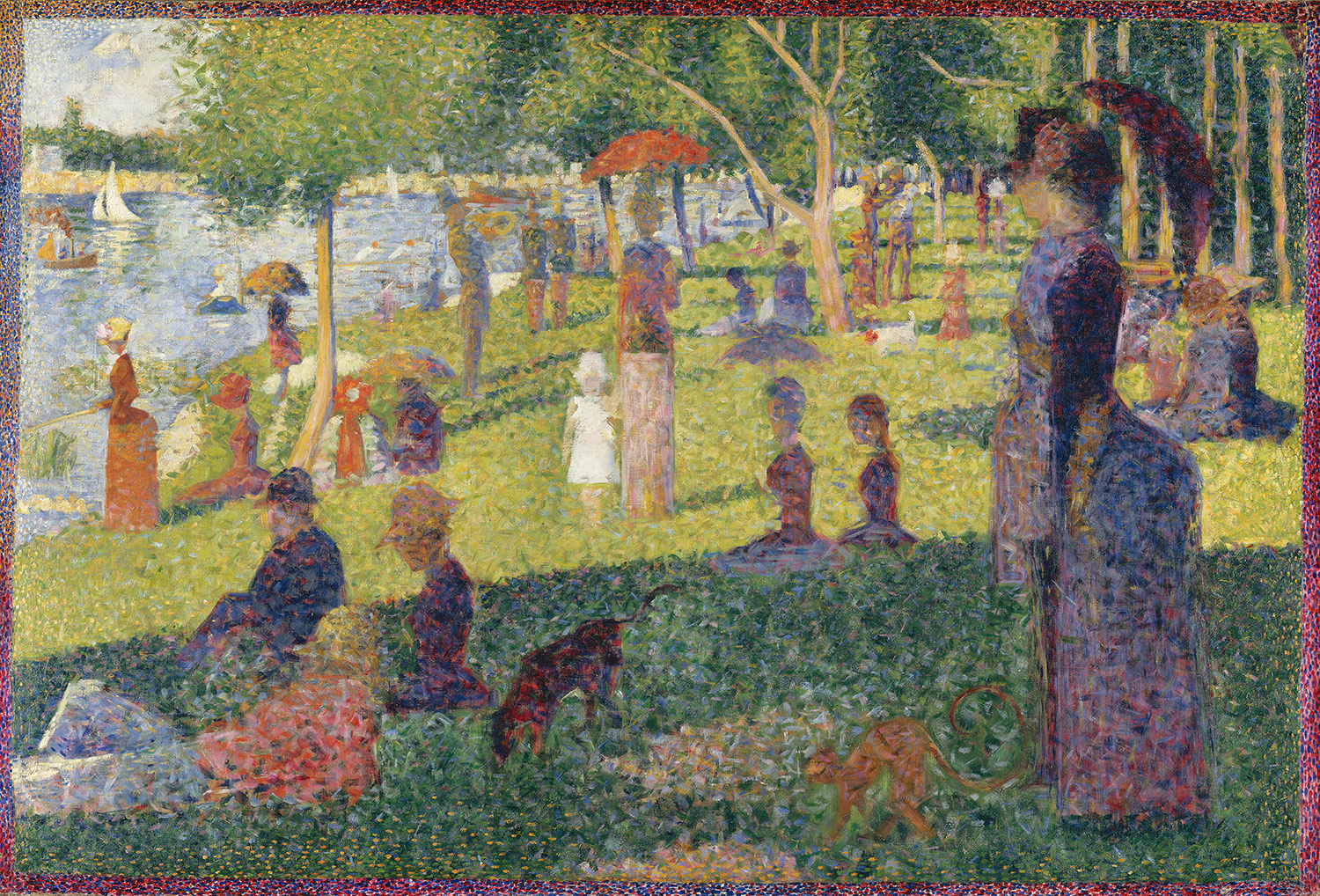(Late 19th Century)
Artists of the Neo-Impressionist circle renounced the random spontaneity of Impressionism in favor of a measured painting technique grounded in science and the study of optics.
Whereas the Impressionist painters spontaneously recorded nature in terms of the fugitive effects of colour and light, the Neo-Impressionists applied scientific optical principles of light and colour to create strictly formalized compositions.
The terms divisionism and pointillism originated in descriptions of Seurat’s painting technique, in which paint was applied to the canvas in dots of contrasting pigment. A calculated arrangement of coloured dots, based on optical science, was intended to be perceived by the retina as a single hue. The entire canvas was covered with these dots, which defined form without the use of lines and bathed all objects in an intense, vibrating light. In each picture the dots were of a uniform size, calculated to harmonize with the overall size of the painting. In place of the hazy forms of Impressionism, those of Neo-Impressionism had solidity and clarity and were simplified to reveal the carefully composed relationships between them. Though the light quality was as brilliant as that of Impressionism, the general effect was of immobile, harmonious monumentality, a crystallization of the fleeting light of Impressionism.
The terms divisionism and pointillism originated in descriptions of Seurat’s painting technique, in which paint was applied to the canvas in dots of contrasting pigment. A calculated arrangement of coloured dots, based on optical science, was intended to be perceived by the retina as a single hue. The entire canvas was covered with these dots, which defined form without the use of lines and bathed all objects in an intense, vibrating light. In each picture the dots were of a uniform size, calculated to harmonize with the overall size of the painting. In place of the hazy forms of Impressionism, those of Neo-Impressionism had solidity and clarity and were simplified to reveal the carefully composed relationships between them. Though the light quality was as brilliant as that of Impressionism, the general effect was of immobile, harmonious monumentality, a crystallization of the fleeting light of Impressionism.
Neo-Impressionism was led by Georges Seurat, who was its original theorist and most significant artist, and by Paul Signac, also an important artist and the movement’s major spokesman. Other Neo-Impressionist painters were Henri-Edmond Cross, Albert Dubois-Pillet, Maximilien Luce, Théo Van Rysselberghe, and, for a time, the Impressionist painter Camille Pissarro. The group founded a Société des Artistes Indépendants in 1884.
By the 1890s the influence of Neo-Impressionism was waning, but it was important in the early stylistic and technical development of several artists of the late 19th and early 20th centuries, including Vincent van Gogh, Paul Gauguin, Henri de Toulouse-Lautrec, and Henri Matisse.
Georges Seurat
Painter, founder of the 19th-century French school of Neo-Impressionism whose technique for portraying the play of light using tiny brushstrokes of contrasting colours became known as Pointillism. Using this technique, he created huge compositions with tiny, detached strokes of pure colour too small to be distinguished when looking at the entire work but making his paintings shimmer with brilliance.
Study for A Sunday on La Grande Jatte
Seurat's style came to be known as Pointillism (from the French word "point," or "dot"), but he preferred the term divisionism—the principle of separating color into small touches placed side-by-side and meant to blend in the eye of the viewer. He felt that colors applied in this way—not mixed on a palette or muddied by overlapping—would retain their integrity and produce a more brilliant, harmonious result. The juxtaposed touches of color that are woven together here with short, patchy brushstrokes are more systematically applied, with discrete daubs of paint, in the final work.
Refernces:
http://www.britannica.com/EBchecked/topic/408661/Neo-Impressionism
http://www.britannica.com/EBchecked/topic/536352/Georges-Seurat
http://www.metmuseum.org/toah/hd/seni/hd_seni.htm

No comments:
Post a Comment